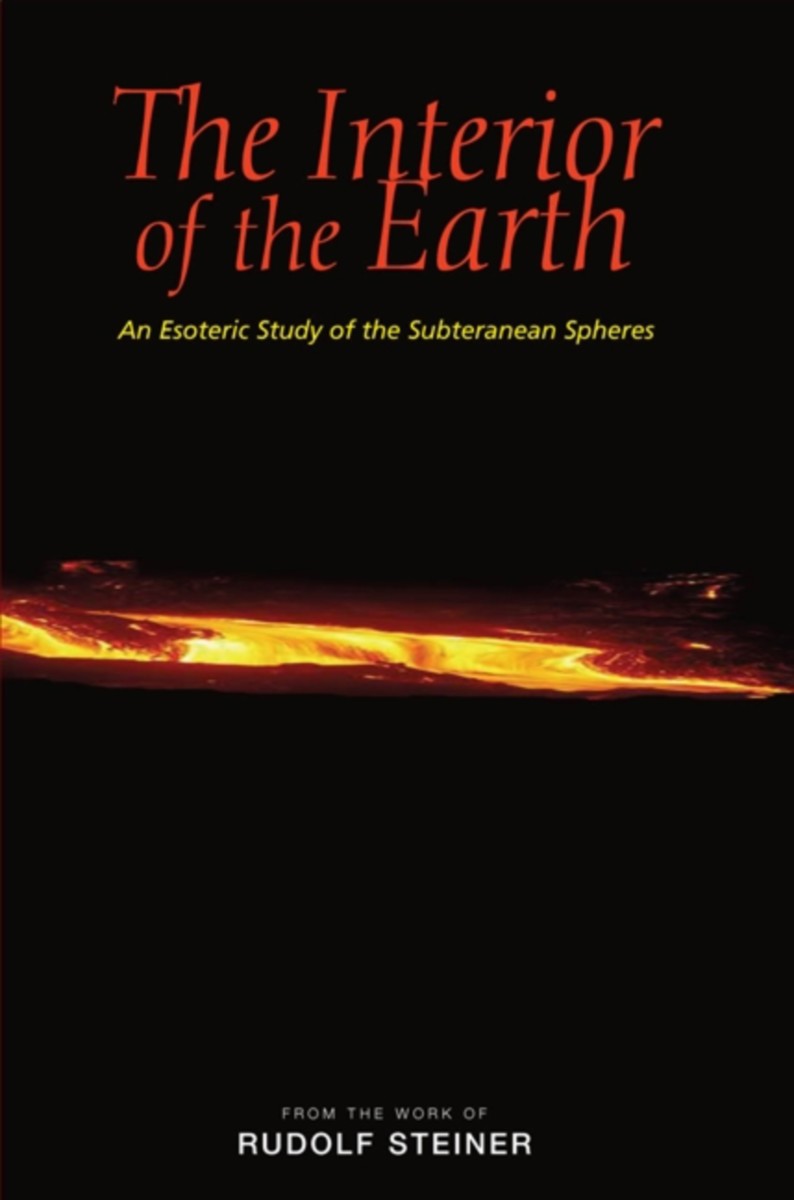The Interior of the Earth
An Esoteric Study of the Subterranean Spheres
- Publisher
Rudolf Steiner Press - Published
1st November 2006 - ISBN 9781855841192
- Language English
- Pages 144 pp.
Selected lectures
Modern science cannot speak with justifiable authority about more than only a tiny fraction of the Earth’s interior. We have, literally, scratched just the surface of our planet. Can we know what lies beneath our feet in the unimaginable depths of the Earth? Can spiritual investigation give us answers to our questions about something virtually impossible to perceive through our physical senses?
Rudolf Steiner’s discussions of the subterranean spheres are gathered, along with notes and an introduction, for the first time in this comprehensive volume. His unique overview pictures of the nine layers of the Earth as they become visible through spiritual scientific research. The strata range from what we know as the “mineral” layer, on which we live, to the Earth’s innermost core, which Steiner connects to human and animal reproductive forces. In between these radically different strata are layers such as what Steiner calls the “Mirror Earth,” representing qualities of extreme evil, and the “Fire Earth,” connected to natural catastrophes.
Steiner never conveys abstract or theoretical information, but fact related intimately to humankind. Fire Earth, for example, is acutely affected by human volition. When the human will is chaotic and untrained, says Steiner, it acts magnetically on this layer and disrupts it, leading to volcanic eruptions. He describes other natural catastrophes, such as extreme weather and earthquakes, in connection to the interior of the Earth and to karma.
C O N T E N T S:
Foreword by Paul V. O’Leary
I. The Interior of the Earth: A Conceptual Framework
The Interior of the Earth and Volcanic Eruptions (excerpt)
The Interior of the Earth)
Earthquakes, Volcanoes, and the Human Will (excerpt)
Rosicrucian Training, the Interior of the Earth, Earthquakes and Volcanoes (excerpt)
Mephistopheles and Earthquakes
II. The Interior of the Earth in Relation to the Forces of Nature: Weather and Karma
Forces of Nature, Volcanic Eruptions, Earthquakes and Epidemics in Relation to Karma
Gravity, Volcanic Forces, and Weather (excerpt)
Karma: Finding in Disaster the Path to Perfection (excerpt)
III. The Human Being between the Celestial and Subterranean Spheres
Memory and Conscience: Leading Letter 26
From Nature to Sub-nature: Leading Letter 29
Appendix:
“The Interior of the Earth” by Adolf Arenson
“Esoteric Conversation” Countess Johanna Keyserlingk
Notes
Sources
Rudolf Steiner
Rudolf Steiner (b. Rudolf Joseph Lorenz Steiner, 1861–1925) was born in the small village of Kraljevec, Austro-Hungarian Empire (now in Croatia), where he grew up. As a young man, he lived in Weimar and Berlin, where he became a well-published scientific, literary, and philosophical scholar, known especially for his work with Goethe’s scientific writings. At the beginning of the twentieth century, he began to develop his early philosophical principles into an approach to systematic research into psychological and spiritual phenomena. Formally beginning his spiritual teaching career under the auspices of the Theosophical Society, Steiner came to use the term Anthroposophy (and spiritual science) for his philosophy, spiritual research, and findings. The influence of Steiner’s multifaceted genius has led to innovative and holistic approaches in medicine, various therapies, philosophy, religious renewal, Waldorf education, education for special needs, threefold economics, biodynamic agriculture, Goethean science, architecture, and the arts of drama, speech, and eurythmy. In 1924, Rudolf Steiner founded the General Anthroposophical Society, which today has branches throughout the world. He died in Dornach, Switzerland.


